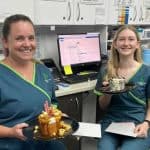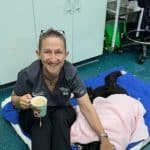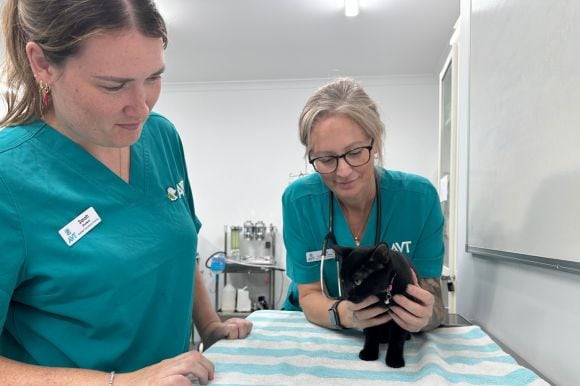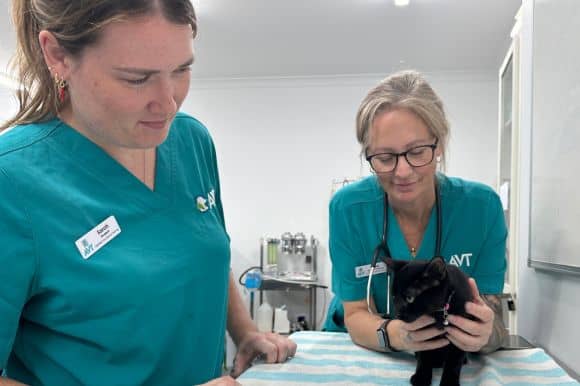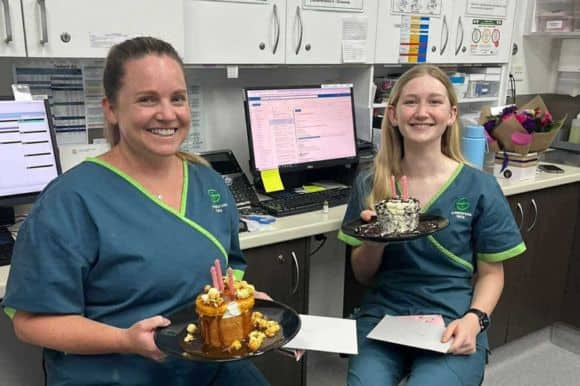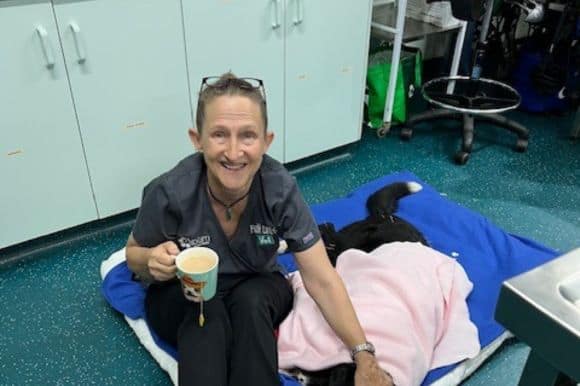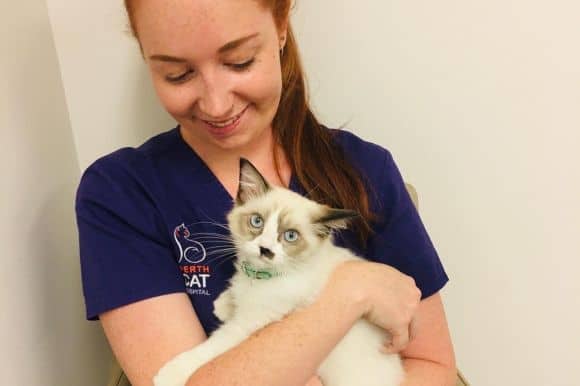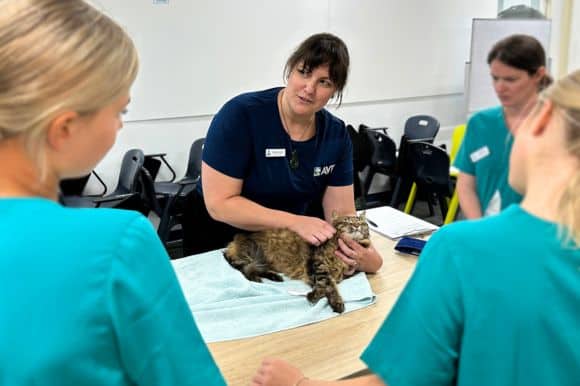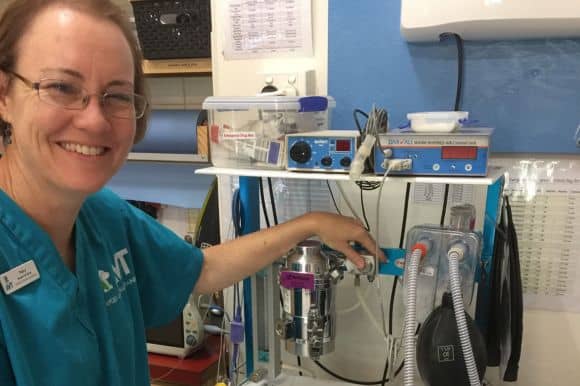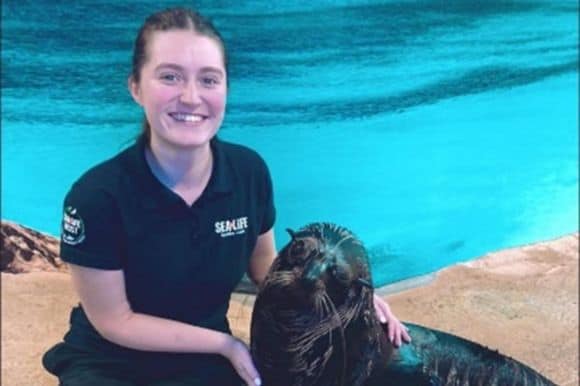From Zookeeper to Zoo Vet Nurse: Maddie’s story
For Maddie, becoming a Veterinary Nurse was never just a career choice, it was a lifelong calling. From an early age, she knew her future would be dedicated to animals. Today, she works as a Veterinary Nurse at Perth Zoo, combining her passion for zookeeping with her clinical nursing skills. Maddie recently shared her story with us, offering a behind-the-scenes look at life as a zoo veterinary nurse.
A childhood dream
“I’ve never wanted to do anything else,” Maddie says. “In primary school I remember attending a junior Keeper for a Day experience at Perth Zoo which was so magical to me, I couldn’t believe zookeeping was a real job!”
Although encouraged in high school to consider veterinary science or a conservation degree, Maddie’s career path shifted after working as an animal attendant at her local vet hospital. “I felt more aligned with what I saw the veterinary nurses doing,” she explains.
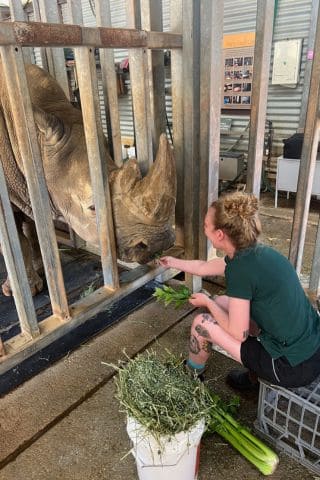
From Zookeeper to Student Veterinary Nurse
Before studying, Maddie spent several years volunteering at Caversham Wildlife Park before being employed as a zookeeper.
“I really fell in love with animal husbandry and exhibited animal care. Veterinary nursing had fallen off my radar whilst I learnt all things zookeeping. After quite a few years I felt ready for a new challenge and enrolled in the Certificate IV Veterinary Nursing.”
“Volunteering helped get my foot in the door and quickly became the highlight of my week.”
Exploring opportunities after graduation
When Maddie completed her Certificate IV in Veterinary Nursing with AVT in 2021, she considered a variety of options.
“We had adopted our first greyhound the year I graduated, and I was interested in volunteering with Greyhounds As Pets or applying for nursing roles in shelters. I spent some time in general practice but I really missed the variety of species I worked with as a zookeeper.”
Her attention soon turned to exotic veterinary nursing, and when an opportunity to volunteer at Perth Zoo’s Veterinary Department arose, she leapt at it. “As soon as I saw the scope of what the zoo vet nurses were doing, I knew it was the perfect job for me.”
Landing a role at Perth Zoo
“Volunteering helped get my foot in the door and quickly became the highlight of my week,” Maddie says. Her dedication soon led to casual work and eventually a permanent position.
Her zookeeping background was a huge advantage:
“Husbandry is a huge aspect of veterinary nursing in a zoo, we have to create appropriate housing, safely handle and restrain, provide nutrition and enrichment, and monitor the behaviour and health of every patient. Having experience in those areas helped me immensely in transitioning to a paid nursing position at Perth Zoo.”
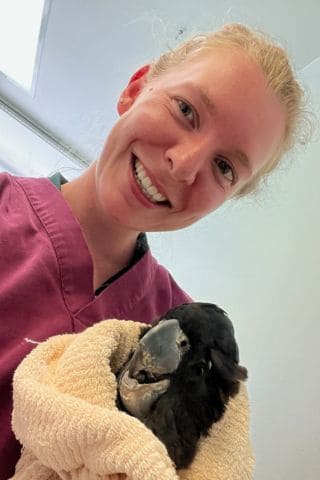
A day in the Life of a Zoo Veterinary Nurse
No two days are the same for Maddie and her team. Zoo nurses rotate through different rounds:
Wildlife Round
Predominantly wild black cockatoos. We weigh them, clean their cages and administer medications and nutrition via crop needle. Once that’s done, we move on to anaesthetic procedures which could be anything from wound care to an orthopaedic repair.
Perth Zoo Round
Caring for hospitalised zoo patients or new arrivals in quarantine. It can involve intensive nursing care, setting up housing to suit their needs, and preparing specialised diets and medications.
Clinical Round
This includes zoo animal procedures, dispensing medications, processing samples and performing in-house lab work. We set up and monitor anaesthetics, which could be anything from a dental procedure on a Sun Bear to the diagnostic workup of a Squirrel Monkey.
Maddie and her colleagues also collaborate with keepers on medical training, teach Murdoch veterinary students and are licensed to use darting equipment when necessary.
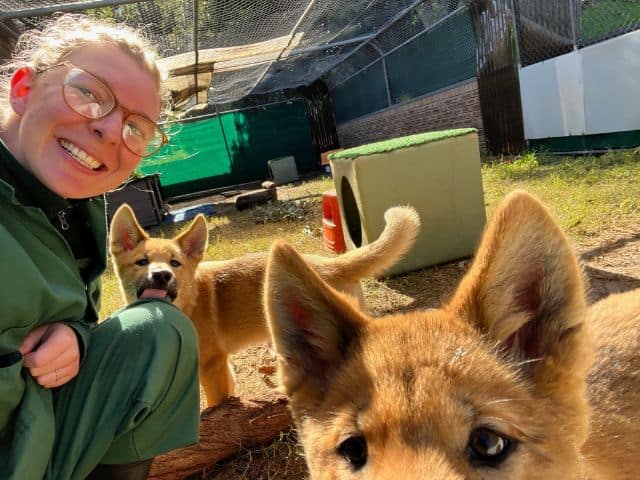
Rewarding moments
While every day is rewarding, some moments stand out. Maddie treasures the rehabilitation and release of wild black cockatoos. “Nursing them through their rehabilitation process and then attending their release back into the wild always gives me goosebumps.”
One unforgettable experience was caring for a wild Northern Rockhopper Penguin that had washed up on the southern coast. “She stayed in our care for months before transferring to Singapore, where she joined another lone Rockhopper. Watching her transform into a sassy, confident individual was incredibly rewarding, though very hard to say goodbye!”
The value of education
Maddie credits studying with AVT for preparing her well. “Everything I learnt in the Certificate IV was transferrable to the workplace I wanted to be in. The theory and skills you learn are relevant and can be applied to any prospective working environment in animal care.”
She also highlights the importance of lifelong learning:
“A huge part of working as a veterinary nurse post-qualification has been learning from people that have been in the industry longer, and continuing to develop professionally by seeking new knowledge and skills.”
Advice for future Veterinary Nurses
Her advice is simple but powerful:
“Just go for it. You will realise very quickly whether it’s the right industry for you, and there’s no harm in giving it a go.”
She encourages aspiring nurses to volunteer wherever possible:
“Volunteering not only allows you to showcase your skills and dedication (and sometimes lead to a paid position), but introduces you to people you otherwise wouldn’t have crossed paths with. Volunteering led me to like-minded people who have remained incredibly important in my life.”
For those considering study, Maddie recommends beginning with a Certificate II in Animal Care as a solid first step before progressing into higher qualifications.
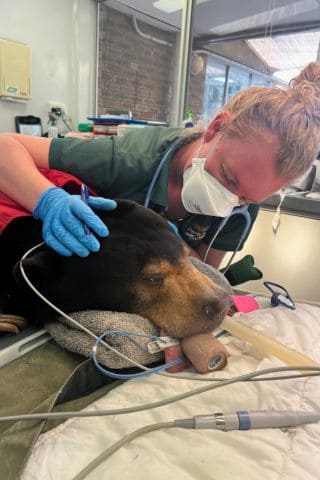
Find out more about Veterinary Nursing
Want to learn more? Read more posts about Veterinary Nursing here
Courses you may like
On-Site Intensive
ACM20121 Certificate II in Animal Care (Vet Nursing Pathway)
About Vet Nurse Pathway
Vet Nursing Pathway
Online & On-campus
ACM40418 Certificate IV in Veterinary Nursing
About Vet Nursing
